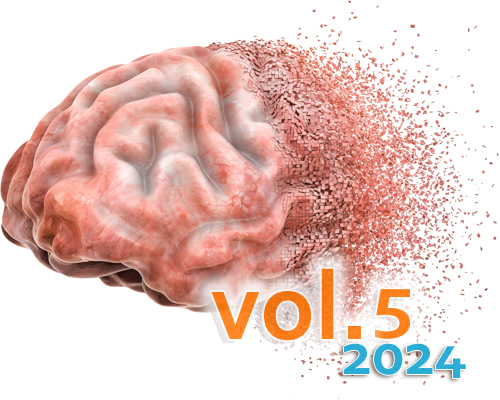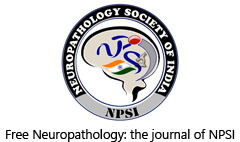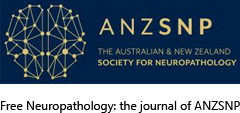Neurooncology: 2024 update
DOI:
https://doi.org/10.17879/freeneuropathology-2024-5809Keywords:
Neurooncology, Neuropathology, Brain tumors, Glioblastoma, Brain metastasisAbstract
As in previous years, including 2023, a major focus in the neurooncological area of neuropathology was put on more precise and constantly faster diagnostic procedures, even reaching the level of ultra-fast intraoperative diagnostics based on methylation profiling. Neuropathological diagnostic precision and clinical follow-up treatment has been further increased by combining DNA methylation profiling with targeted panel sequencing. A few new, molecularly defined tumor subtypes have been proposed, among others, a glioneuronal tumor with ATRX alteration, kinase fusion and anaplastic features (in its abbreviated form named GTAKA) and the de novo replication repair deficient glioblastoma, IDH-wildtype both having either distinct prognostic or therapeutic implications. Regarding the understanding of brain tumor development and progression, several novel mechanisms have been presented which might also be considered as treatment targets in the future, such as a) autonomous rhythmical Ca2+ oscillations in interconnected glioma cell networks driving tumor growth; b) transfer of mitochondria from normal astrocytes to glioma cells enhancing proliferation and self-renewal; c) brain endothelial cell remodeling upon matrix-metalloprotease 9 secretion by tumor cells metastasizing into the CNS and d) anti-tumor activity of microglia in CNS metastasis of breast cancer. Finally, in contrast to previous years, several very promising neurooncological treatment studies have been conducted, focusing on specific targets such as H3K27M or IDH1/2 mutations for which a proper neuropathological assessment is key. The continuous translation of potential new treatment targets using faster and precise diagnostic procedures will further pave the way for better individualized clinical care of neurooncological patients.
Metrics
Published
How to Cite
Issue
Section
License
Copyright (c) 2024 Michel Mittelbronn

This work is licensed under a Creative Commons Attribution 4.0 International License.
Papers are published open access under the Creative Commons BY 4.0 license. This license lets others distribute, remix, adapt, and build upon your work, even commercially, as long as they credit you for the original creation. Data included in the article are made available under the CC0 1.0 Public Domain Dedication waiver, unless otherwise stated, meaning that all copyrights are waived.



















